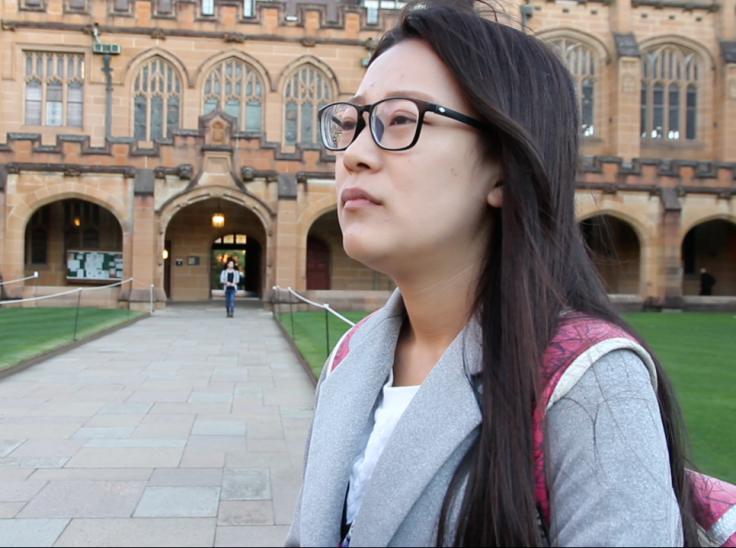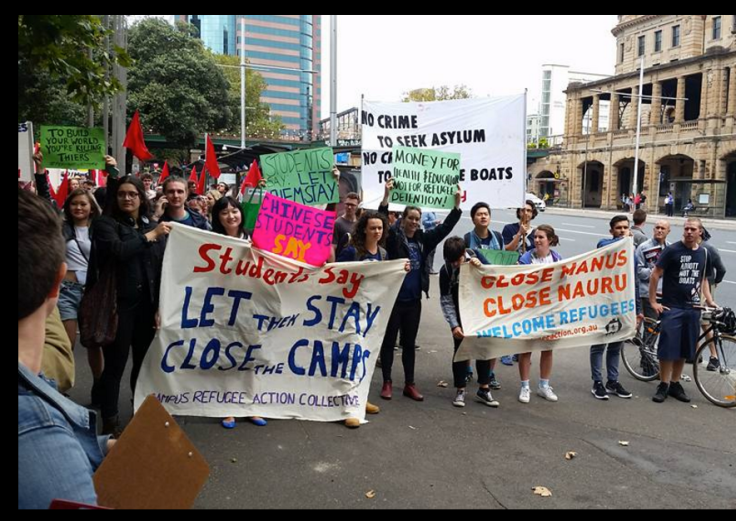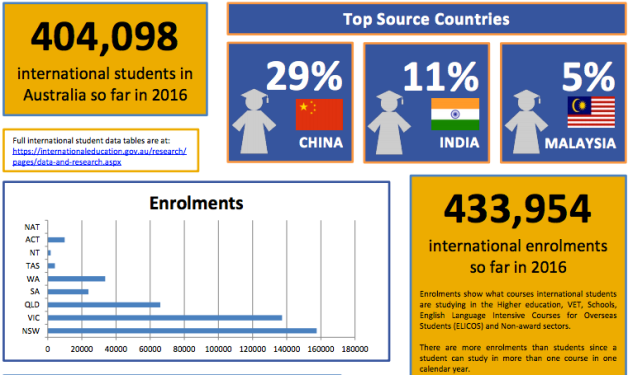How do local students think about their overseas fellow classmates?
(Video: Yang Liu)
At 6.30 p.m. on May 18th, among the busy students passing by, a lean girl in bob haircut suddenly crouched down with her arms around herself, at Eastern Avenue in the University of Sydney.
Yifan Kong, a Chinese girl, was participating in the Student Board Election of the University of Sydney Union. The Board is responsible for the decision making of Union collectives and activities. She was the only one international student among the nine candidates.
At this time, the voting process just finished. While other campaigners heaved a sigh with relief, Kong was almost struck by the pressure. She was so anxious about the success after running for the election for over a month.
Kong and the Boom of Chinese Overseas Students
Kong was born in Beijing, the capital of China. Like many Beijingers, she is an outgoing girl coming from a high-educated, wealthy family. Her father once participated in a short-period session at the Wharton School of University of Pennsylvania. Both of her parents work in the field of civil aviation. They are very supportive of her overseas study.
After graduating from the high school affiliated with Beijing Normal University, Kong came to Sydney last year, as part of the boom of Chinese students studying in Australia.
Since the reform and openness policy launched in the 1970s, China’s economic growth has created a burgeoning middle class. Because of the One-Child policy, they pay intense attention to the only one child’s education. Hence, more and more Chinese students go abroad to achieve higher education.

Matching this backdrop, according to the Department of Education and Training of Australia, the number of international students in Australia has risen sharply, reaching 421,258 until February 2016.
In terms of University of Sydney, international students accounted for 22.6% of the total students, ranking 7th on the list of Australian universities admitting international students in 2014.
Mr. John Shields, the Deputy Dean (Education) of Business School at University of Sydney, told the reporter, “Since 2013, the proportion of international students in Business school has increased considerably, and now (Semester 1 2016) stands at 62%… The majority of our international students from mainland China.”
Overseas Students with Assimilation Challenges
In spite of the above optimistic figures, Mr. Shields added, “experience tells us that many of our international students have difficulty engaging with domestic students and local communities.”
In order to help them face the challenges, University of Sydney has set up various types of preparing courses at Centre for English Teaching (CET) including language improvement and academic writing training, while in the core unit BUSS5000 Critical Thinking in Business School, international students still showed high fail rate in last year.
As for the engagement problem, it remains a swelling. The newcomers still tend to stick to their fellow national groups.
Kristine Carbonell, a local postgraduate student told the reporter, “they (international students) are cool, but sometimes it’s a little hard to talk to them because they keep together and speak their own language.”

For some Chinese students such as Lidan Wang, a Chinese girl just landed in Sydney this semester, they try to go to some parties and bars to fit in Australian culture. “But I’m not familiar with their jokes… I don’t have friends to talk with. Neither am I brave enough to chip in strangers’ chat.” It made Wang’s “small step” as well as a “giant leap” to reach out finally turn out to be a vivid example of the “wall flower” unfortunately.
Kong and Her Election
Unlike most of her Chinese friends, Kong is open to unfamiliar situations and would like to develop her leadership. She is very active in campus social life. She went through a five-week-long preparing course in CET after she received the certification of enrollment, and then entered the university formerly as a bachelor student. Since then, she has been an activist for refugee movement, a reporter for the university student newspaper Honi Soit, a playwright and a producer for the university’s experimental little theatre.

“I’m more likely to communicate with people, rather than to immerse in research and papers”, said she. This characteristic might be a prerequisite for her participation of the Union Board Election.
Kong’s decision of competing for the Election was gestated in her part-time working experience. At that time, she was an intern cashier in a Seven-Eleven Convenience store. Her friend, a formal cashier, complaint about the underpay problem to her. He was officially paid fifteen dollars per hour, but he had to transfer five dollars back to the store manager. Otherwise, he could not maintain the cashier position. After chatting with her Chinese classmates on this problem, Kong found that her friend was not the only o student marooned.
When helping them to defend rights, she noticed that there was no international student member on the Student Union Board, which meant that the current decision-making directors did not have on-the-ground accessibility to the ostudents’ problems and difficulties.
This discovery finally contributed to her nomination.
“I want to be the voice of international students”, said she, “now that international students have accounted for a fifth of the total students, we deserve to have a say”.
Her proposal mainly focused on the international students’ issues, such as reserving a place on every Club and Society executive for an international student, and creating an International Student Portfolio within the Board.

When one of her followers was asked the reason of voting her, the girl said, “I’m quite interested in this project, and Koko (Kong) is very brave,” She whispered, gazing at Kong on the stage of Manning Bar, in the evening of 18th May.
It was about 8.30 pm. Kong was hugging other elected candidates just announced to be the next members.
She has become the first international student elected on the Board since 2008, verified by Michael Rees, current Union Board President.
“Despite people telling me … that international students don’t care about politics (a rather bigoted stereotype)”, as Hannah Elten, a German USYD student who acted as Kong’s campaign manager, wrote on her Facebook, “Koko (Kong) ended up receiving 1451 votes”, with the first place ranked among the competitors.
Kong has inspired more Chinese students to engage in the social and political engagement on campus. They are fighting for more ways to assimilate and present themselves.



